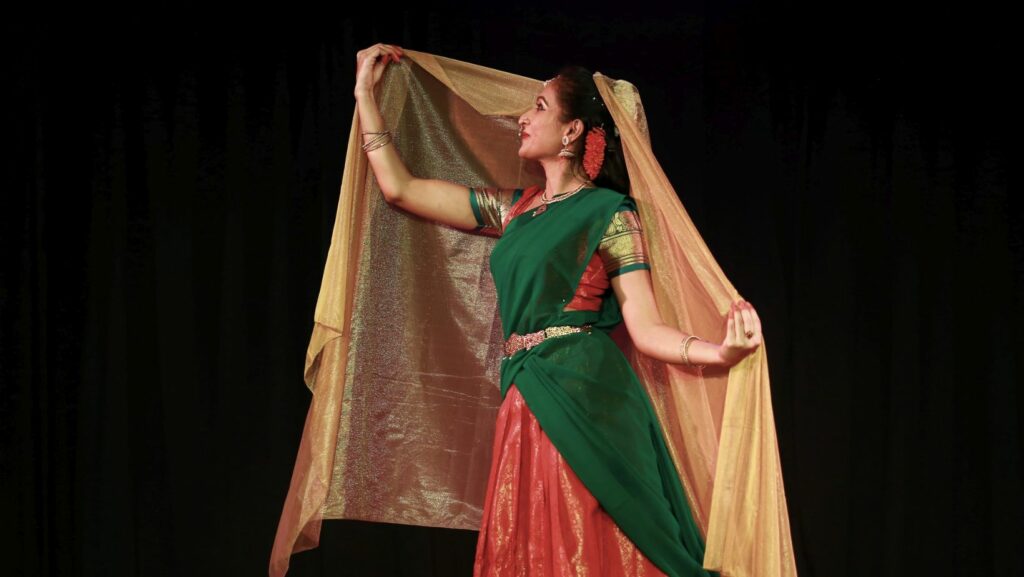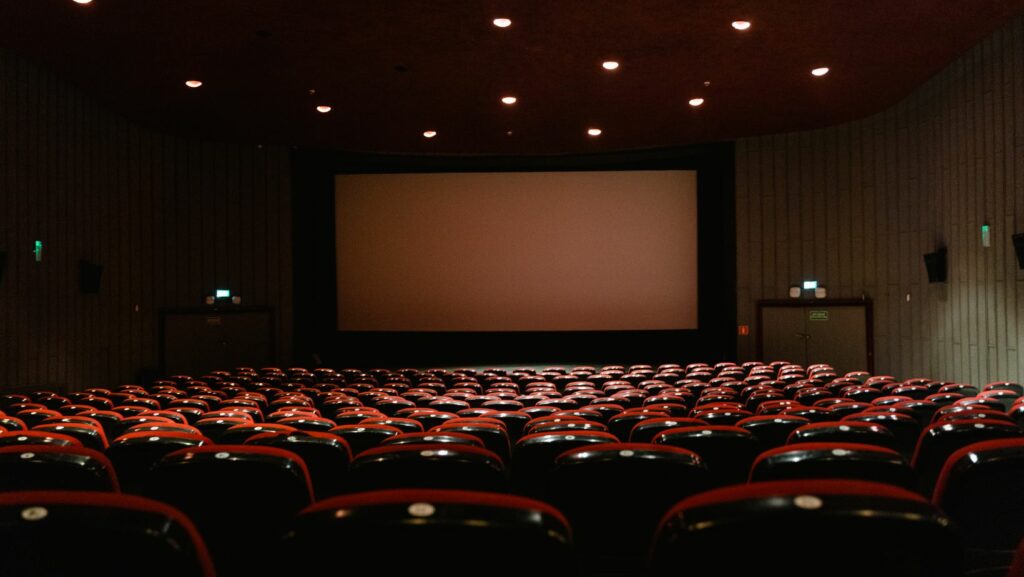Key Takeaways
- Transformation Through Digital Platforms: The emergence of streaming services like Netflix and Amazon Prime Video is revolutionizing Indian cinema by increasing accessibility and allowing diverse films to reach broader audiences.
- Rise of Regional Cinema: Films in Tamil, Telugu, and Bengali languages are gaining traction, offering unique narratives and cultural insights that resonate with both national and international viewers.
- Innovative Storytelling Techniques: Contemporary filmmakers are embracing fresh narrative styles, including nonlinear structures and genre blending, to create engaging and original cinematic experiences.
- Social Representation and Inclusivity: Recent films increasingly spotlight themes of gender equality and LGBTQ+ rights, reflecting a growing commitment to diversity and representation in storytelling.
- Technological Advancements: The integration of high-quality visual effects, virtual reality, and mobile streaming is enhancing the cinematic experience, enabling filmmakers to push creative boundaries.
- Continued Global Impact: The trends in Indian cinema not only reflect societal changes but also solidify India’s position as a significant player in the global entertainment landscape.
Indian cinema has always been a vibrant tapestry of storytelling, culture, and artistry. As the industry evolves, new trends emerge that reflect societal changes and technological advancements. From the rise of digital streaming platforms to the increasing popularity of regional films, the landscape of Indian cinema is undergoing a remarkable transformation.
Audiences are now craving diverse narratives that challenge traditional norms and embrace inclusivity. Filmmakers are responding with innovative storytelling techniques and fresh perspectives that resonate with both local and global viewers. This article delves into the latest trends shaping Indian cinema, exploring how they impact the way stories are told and experienced.
Indian Cinema Trends
 Indian cinema trends reflect the dynamic changes within the industry. Recent developments showcase the impact of digital media on film distribution. Streaming platforms like Netflix and Amazon Prime Video have expanded access to diverse films, leading to increased viewership among audiences. Regional cinema is gaining prominence, with films in languages such as Tamil, Telugu, and Bengali attracting national and international audiences. This trend emphasizes unique storytelling and cultural nuances, resonating with broader demographics. Filmmakers adapt narratives to highlight social issues, engaging viewers with relatable content. Another notable trend involves the incorporation of technology in filmmaking. The rise of high-quality visual effects, animation, and virtual reality enhances the cinematic experience. Filmmakers embrace innovative techniques, enabling more immersive storytelling. Moreover, the representation of marginalized voices is on the rise. Films addressing gender, caste, and LGBTQ+ issues challenge traditional norms and foster greater awareness. Such narratives encourage empathy and understanding, further shaping audience preferences. These trends indicate a shift towards a more inclusive and varied film landscape in India. As audiences demand richer content, filmmakers continue to explore unconventional themes and formats, solidifying Indian cinema’s status on the global stage.
Indian cinema trends reflect the dynamic changes within the industry. Recent developments showcase the impact of digital media on film distribution. Streaming platforms like Netflix and Amazon Prime Video have expanded access to diverse films, leading to increased viewership among audiences. Regional cinema is gaining prominence, with films in languages such as Tamil, Telugu, and Bengali attracting national and international audiences. This trend emphasizes unique storytelling and cultural nuances, resonating with broader demographics. Filmmakers adapt narratives to highlight social issues, engaging viewers with relatable content. Another notable trend involves the incorporation of technology in filmmaking. The rise of high-quality visual effects, animation, and virtual reality enhances the cinematic experience. Filmmakers embrace innovative techniques, enabling more immersive storytelling. Moreover, the representation of marginalized voices is on the rise. Films addressing gender, caste, and LGBTQ+ issues challenge traditional norms and foster greater awareness. Such narratives encourage empathy and understanding, further shaping audience preferences. These trends indicate a shift towards a more inclusive and varied film landscape in India. As audiences demand richer content, filmmakers continue to explore unconventional themes and formats, solidifying Indian cinema’s status on the global stage.
Historical Influences on Indian Cinema
Historical influences significantly shaped Indian cinema, guiding its evolution and storytelling approach. Various factors, from colonialism to cultural movements, left an indelible mark on the film industry.
The Golden Era
The Golden Era of Indian cinema, spanning the 1950s to the 1970s, showcased profound storytelling and artistic innovation. Filmmakers like Satyajit Ray and Guru Dutt created masterpieces that explored social issues and human emotions. This period emphasized realism and artistic expression, with films often reflecting India’s political and cultural landscape. Audiences experienced cinema as a medium of social commentary, leading to the rise of parallel cinema that challenged commercial norms. Classic films like Pyaasa and Aparajito remain influential, inspiring contemporary filmmakers to explore diverse narratives.
The Role of Music and Dance
Music and dance play integral roles in Indian cinema, enhancing storytelling and emotional depth. Traditionally, songs serve as narrative devices that convey characters’ feelings and advance plots. Iconic composers such as R.D. Burman and A.R. Rahman contributed to memorable soundtracks that resonate with audiences. Dance sequences complement musical elements, showcasing cultural heritage and artistry. The combination of music and dance creates a unique cinematic experience, captivating viewers and fostering a strong connection with the film’s themes. This enduring tradition continues, with contemporary films incorporating diverse musical styles and choreographies.
Contemporary Trends in Indian Cinema
Contemporary Indian cinema showcases dynamic shifts in storytelling and audience engagement. Filmmakers adapt to evolving societal values and emerging technologies, shaping the future of the industry.
Rise of Regional Cinema
Regional cinema continues to gain visibility, significantly influencing the Indian film landscape. Tamil, Telugu, and Bengali films exemplify this trend, offering rich narratives infused with local culture. These films often address pressing societal issues, garnering critical acclaim and box office success. For example, “”Super Deluxe”” (Tamil) and “”The Lunchbox”” (Hindi) exemplify innovative storytelling and relatable themes. The success of these films highlights audiences’ growing appreciation for regional narratives, driving films’ performances at national and international platforms.
Impact of Streaming Platforms
Streaming platforms play a pivotal role in transforming Indian cinema’s reach and accessibility. Services like Netflix and Amazon Prime Video provide diverse film collections that appeal to various audiences. They facilitate the discovery of lesser-known films alongside mainstream blockbusters, creating demand for unique content. This shift enables independent filmmakers to share their work without traditional constraints, fostering creativity. Recent examples include “”Paatal Lok”” (Amazon Prime Video) and “”Sacred Games”” (Netflix), which explore multi-faceted themes and characters. Such platforms further amplify global interest in Indian cinema, establishing it as a significant player in the worldwide entertainment landscape.
Social and Cultural Reflections
Indian cinema reflects the dynamic societal changes occurring across the country. Filmmakers respond to shifting cultural landscapes, tackling themes that resonate with diverse audiences.
Representation of Gender and Diversity
Representation in Indian cinema has evolved significantly in recent years. Filmmakers increasingly spotlight gender equality, with narratives centering on women’s empowerment and challenging patriarchal norms. Films like “”Piku”” and “”Tumhari Sulu”” depict strong female protagonists navigating personal and professional realms. Diversity in storytelling also extends to LGBTQ+ communities. Movies such as “”Shubh Mangal Zyada Saavdhan”” address same-sex relationships, contributing to broader societal acceptance. Additionally, narratives explore various cultural contexts, highlighting regional identities and traditions. This inclusivity enhances the richness of Indian cinema, fostering a deeper understanding of the nation’s multifaceted society.
gender equality, with narratives centering on women’s empowerment and challenging patriarchal norms. Films like “”Piku”” and “”Tumhari Sulu”” depict strong female protagonists navigating personal and professional realms. Diversity in storytelling also extends to LGBTQ+ communities. Movies such as “”Shubh Mangal Zyada Saavdhan”” address same-sex relationships, contributing to broader societal acceptance. Additionally, narratives explore various cultural contexts, highlighting regional identities and traditions. This inclusivity enhances the richness of Indian cinema, fostering a deeper understanding of the nation’s multifaceted society.
Changing Narrative Styles
Narrative styles in Indian cinema are transforming, driven by audience demand for originality. Filmmakers experiment with nonlinear storytelling and unconventional plot structures. For instance, films like “”Andhadhun”” utilize twists and turns that keep viewers engaged through innovative techniques.
Social commentary remains a prominent theme, with filmmakers addressing contemporary issues like corruption and economic disparity. “”Article 15,”” for example, critiques caste discrimination in a gripping narrative. Genres blend more frequently, creating unique cinematic experiences that defy traditional categories. This experimentation in narrative style reflects a broader shift towards creativity and innovation within the industry.
Technological Advancements
Technological advancements significantly shape the landscape of Indian cinema. The integration of digital technologies enhances filmmaking, distribution, and viewer engagement.
Digital streaming services revolutionize film accessibility. Platforms like Netflix and Amazon Prime Video provide wide-ranging access to films, from blockbusters to independent projects. These services now attract millions of subscribers, expanding audience reach and diversifying content. Independent filmmakers gain visibility through these platforms, enriching the creative landscape with unique narratives.
Visual effects (VFX) play a crucial role in modern filmmaking. Filmmakers adopt high-quality VFX and animation to create immersive experiences, resulting in stunning visual spectacles. Films such as “”Baahubali”” set benchmarks for production quality, illustrating the impact of technology on storytelling.
Innovative techniques like virtual reality (VR) and augmented reality (AR) emerge within projects. Experiences enable audiences to interact with narratives, enhancing emotional connections. These technologies promise to transform traditional viewing into participatory experiences, engaging viewers in new ways.
Mobile technology also influences how audiences access content. With widespread smartphone use, viewers can stream films anytime, anywhere. This ubiquity fosters consumption patterns that prioritize convenience, allowing regional films to compete on an international scale.
Artificial intelligence (AI) impacts various production aspects, including script analysis and audience targeting. Filmmakers utilize AI to analyze trends and preferences, tailoring content for viewers. This data-driven approach helps craft narratives that resonate, ensuring greater market success. Overall, technological advancements pave the way for creative experimentation in Indian cinema. By leveraging these innovations, filmmakers continue to redefine storytelling practices, producers capture audience attention, and Indian cinema solidifies its presence on the global stage. The landscape of Indian cinema is undeniably evolving. With the rise of digital platforms and a focus on diverse narratives, filmmakers are breaking traditional molds and exploring new storytelling avenues. This shift not only enhances the cinematic experience but also broadens the audience’s perspective on various cultural issues. As regional films gain traction and marginalized voices find representation, Indian cinema continues to solidify its global presence. The integration of technology further enriches this vibrant industry, allowing for innovative techniques that captivate viewers. The future of Indian cinema looks promising, with creativity and inclusivity at the forefront.



